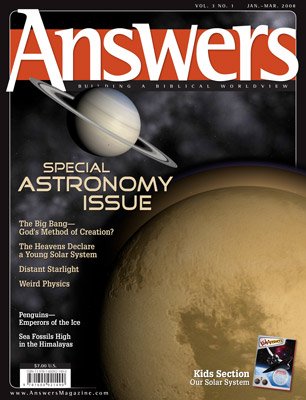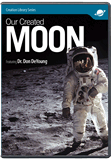Finding the Right Telescope for You
Six Things to Consider . . .
Want to get a better glimpse of God’s handiwork in the night sky? Ready to move beyond basic binoculars but don’t know which telescope to buy?
Before I became an active amateur astronomer, I was in your shoes. Here are some helpful hints that I learned.
Let me start by saying that it may be tempting to save a few dollars and buy a snazzy-looking telescope from a department store. But these telescopes have many shortcomings, including small optics, shaky mounts, and a coarse focuser. The key to finding a quality telescope, like any other significant purchase, is to do your homework. Some of the most critical things to consider are the telescopic optics, the type of telescope, the cost, accessories, and intended use.
First—Optics
Telescopic optics are “everything.” How a telescope collects light is important, and aperture is the key. Aperture is the size of the “objective” lens or mirror of the telescope and is defined by its diameter. (See the figure below.) The objective is what the telescope uses to gather light to create an image, so more aperture means that images will be brighter and that you will see fainter objects.
Furthermore, a greater aperture allows you to see finer details. So do not be fooled by ads inferring 400x power. Magnification is determined by the focal length of the telescope divided by the focal length of the eyepiece. The rule of thumb is no more than 50x magnification per inch of aperture. For instance, if an instrument has only 60 mm (a little more than 2 inches) of aperture, then the most magnification that you can actually use is only about 100x.

“Aperture” is the size of the primary mirror of a reflecting telescope and is defined by its diameter. More aperture means that images will be brighter and you will see fainter objects.
Second—Types
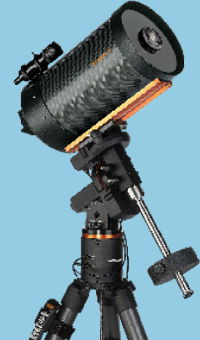
Schmidt Cassegrain Telescope by Celestron
Second, although there are many types of telescopes, the three main types of telescopes are refractors, Schmidt Cassegrain, and Newtonian/Dobsonian reflectors.
Dobsonian telescopes, a type of Newtonian reflector with a simple tube and a mounting system that allows for horizontal and vertical rotation, are the most cost-effective telescopes on the market today. Also called “light buckets,” Dobsonian telescopes are easy to use and set up, and they help any beginner learn how to star hop and how to find constellations and other celestial objects.
It is essential for every observer to learn how the night sky works. Buying a telescope with tracking and a “Go To” function will circumvent this needed learning process. Using a Dobsonian, the observer will need to move the instrument to keep the object being viewed in the field of view to compensate for the earth’s rotation, but almost anyone can quickly learn to do this.
Third—Cost
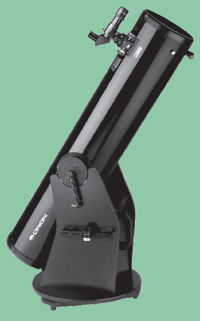
Dobsonian Reflector Telescope by Orion
A quality instrument costs a minimum of $300 to $400 (150£–200£). If this is too much, binoculars are an option for under $100. A beginner should look for a telescope with a minimum 6-inch aperture, and an 8-inch or 10-inch is available for a few dollars more. It is truly amazing what can be seen with a 10-inch light bucket at 150x—planets, nebulae, galaxies, and numerous other wonders.
Fourth—Accessories
Like buying a car, you’ll need some accessories. Every telescope comes with a finder scope that assists the observer in finding objects. Therefore, a Telrad finder is useful because it gives the observer a bull’s-eye view of where the telescope is pointing and lets the beginner see the night sky as is, not reversed and magnified as a 50 mm finder does, which can be confusing. For a beginner, this makes star hopping much easier.
Another helpful accessory is a laser collimator so that you can align the secondary mirror to the primary. This is the only technical gymnastic you must learn, but it is not that difficult.
Fifth—Size
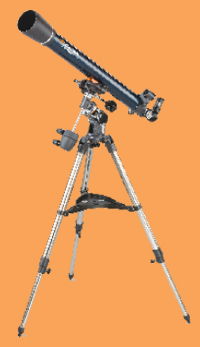
Refractor Telescope by Celestron
Buy only what you can handle by yourself, because getting a large instrument can be back breaking. Anything larger than a 10-inch Dobsonian may be more than what one person can handle. Moreover, transporting a big instrument can be a magic act, so consider how much room you have in your vehicle before you buy.
Sixth—New or Used
Sixth, if you think a used telescope seems attractive, please remember that the cost will not always be cheaper than new. Before buying a used telescope, you may want to seek out an experienced amateur (at a local astronomy club) and ask his or her advice before laying out any hard cash.
Author’s Recommendation
I recommend a SkyQuest Dobsonian telescope by Orion. It has everything a beginner will need, and most important, it has first-rate optics. You can check out several Dobsonian telescopes at www.OrionTelescopes.com.
Owning a quality telescope will unlock countless breathtaking views of the universe and provide years of stimulating exploration into God’s awesome creation.
Related Videos
What to Look for in a Telescope
Answers Magazine
January – March 2008
This collector’s quality issue is a special, extended 112-page issue about astronomy, covering the big bang, black holes, space exploration, and much more!
Browse IssueRecommended Resources

Answers in Genesis is an apologetics ministry, dedicated to helping Christians defend their faith and proclaim the good news of Jesus Christ.
- Customer Service 800.778.3390
- Available Monday–Friday | 9 AM–5 PM ET
- © 2025 Answers in Genesis



